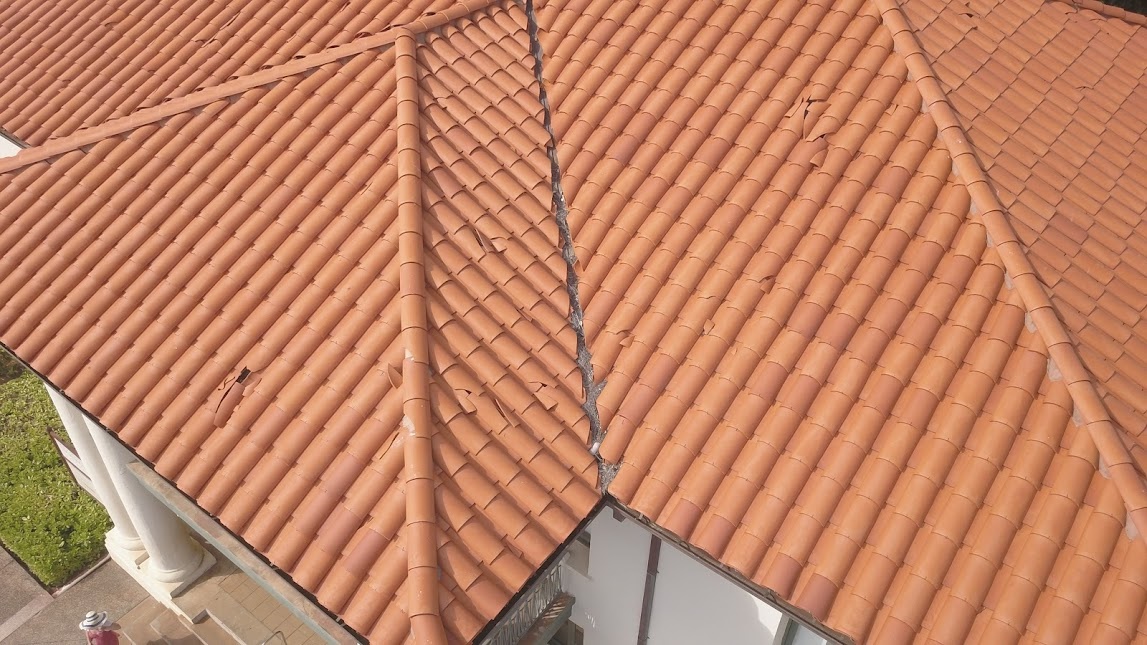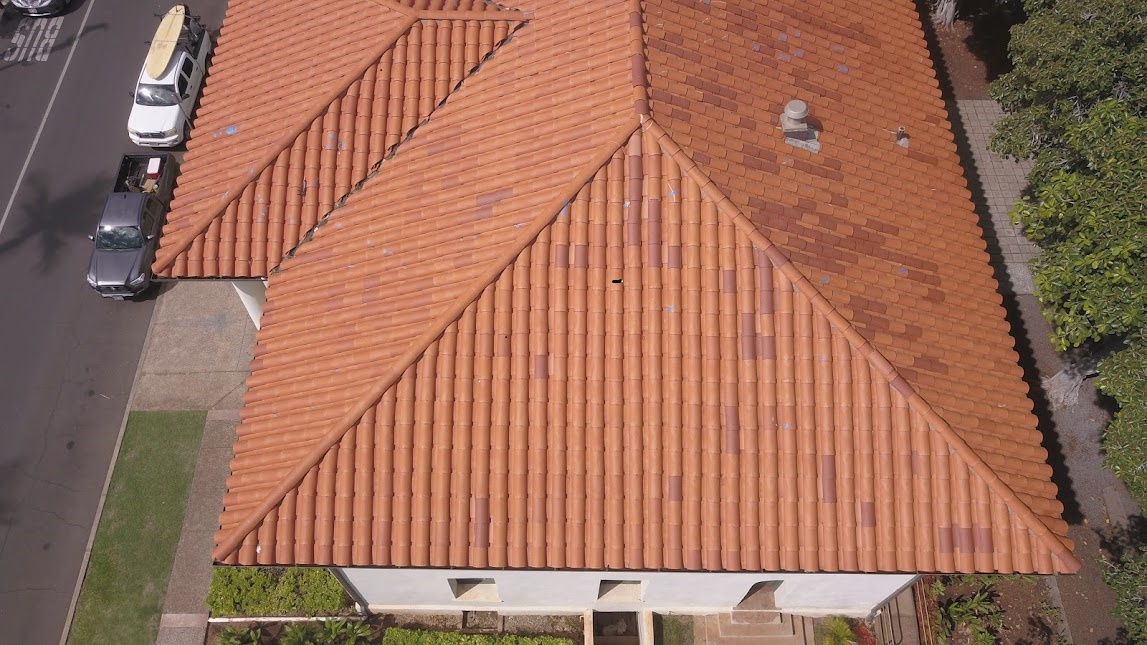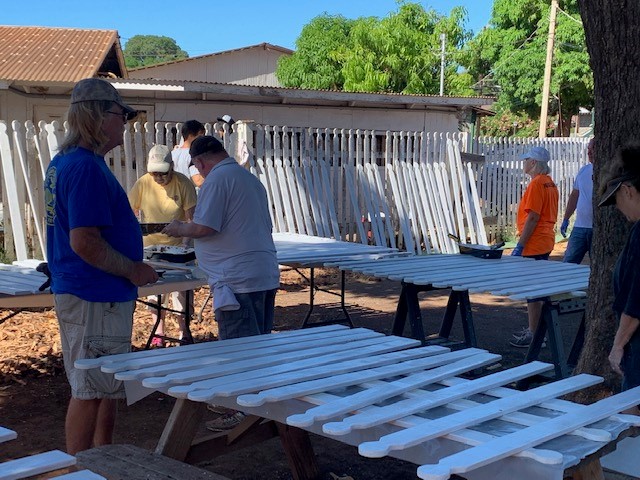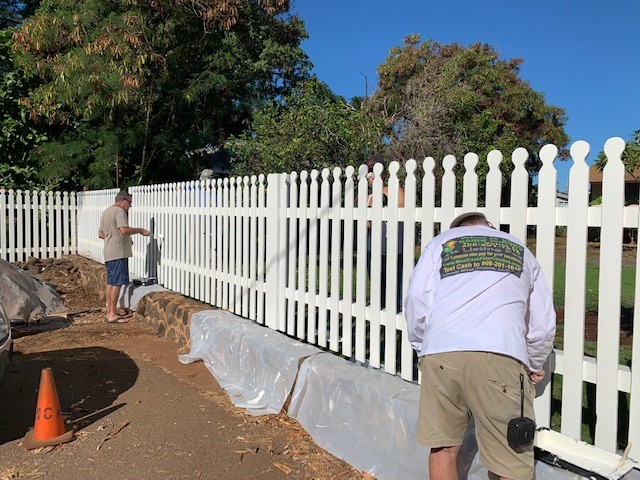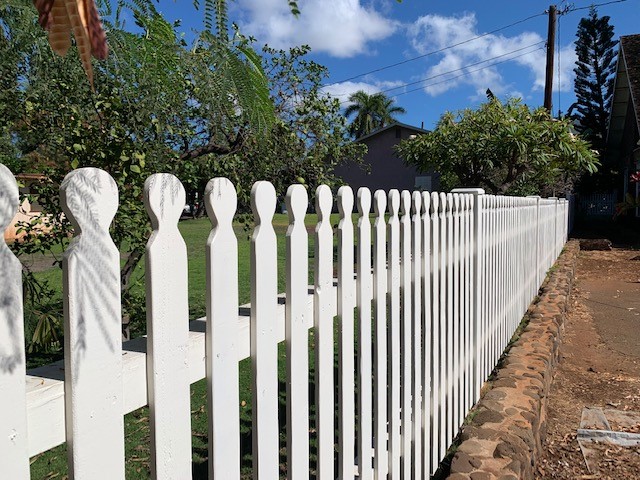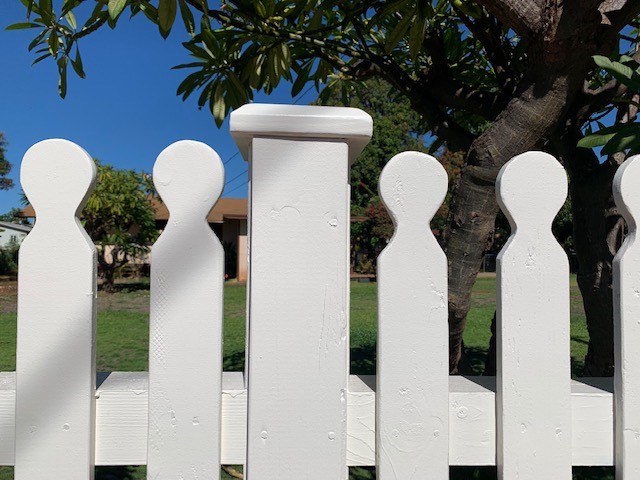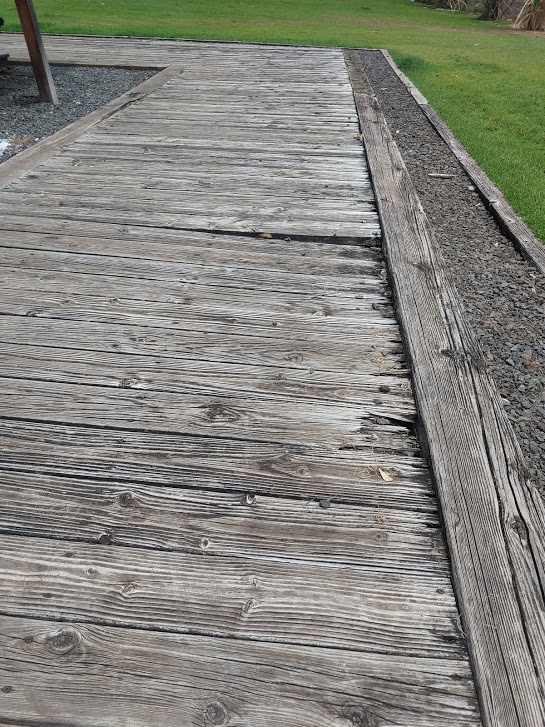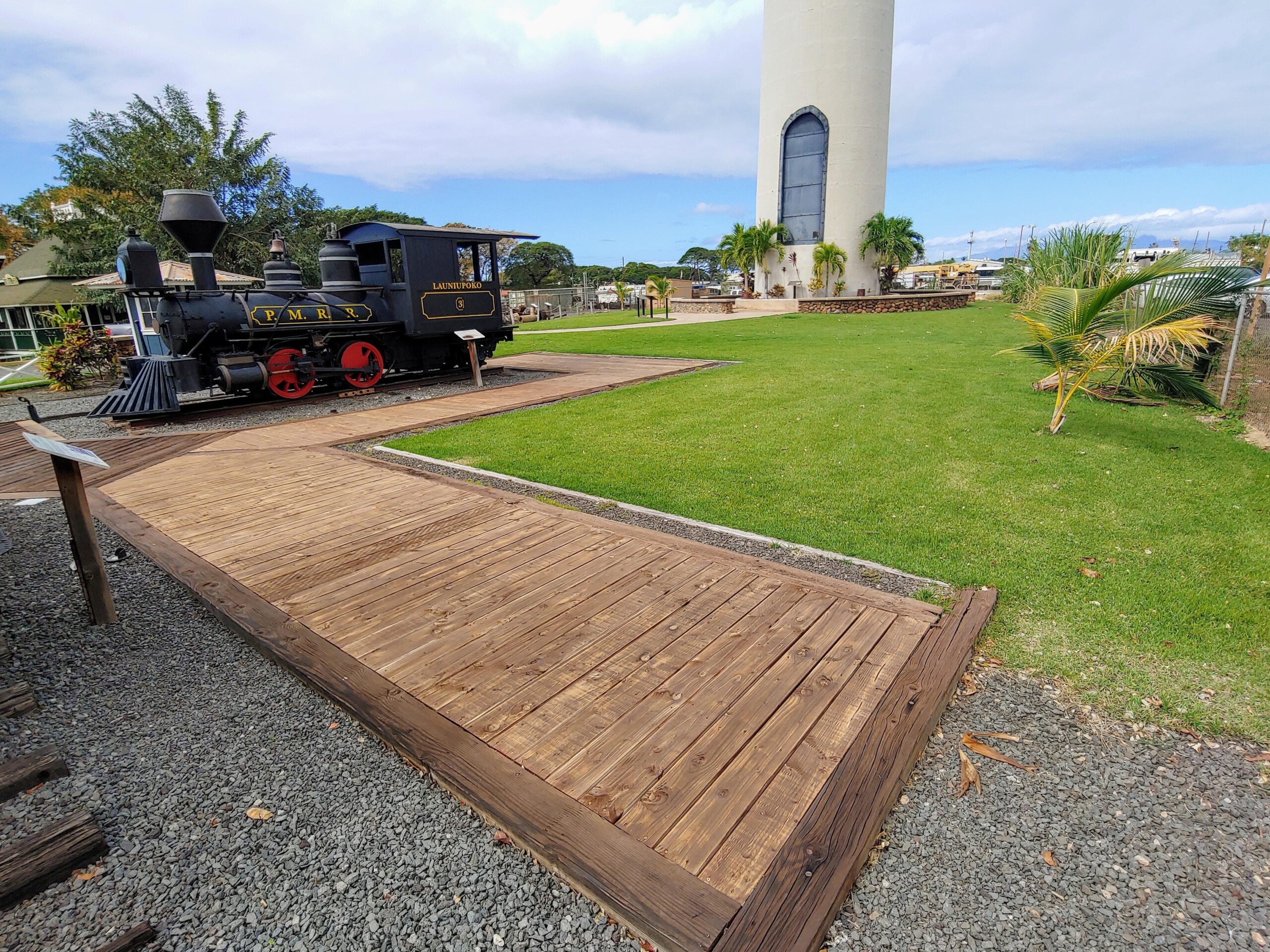The HHF Historic Preservation Grants Program supports projects that preserve historic buildings or sites as a vehicle for building community and enhancing Hawai‘i’s sense of place. These 3 Lahaina projects are great examples!
Lahaina Restoration Foundation recently completed three important preservation projects in Lahaina, Maui: replacing cracked roof tiles at Old Lahaina Courthouse (1859); repairing and repainting the perimeter fence at Hale Aloha (1853) and replacing the wooden viewing platform for the locomotives at the Pioneer Mill Smokestack (1928).
The Mill is eligible for listing on the National Register of Historic Places. The other buildings are designated as contributing structures in the Lahaina National Historic Landmark.
Repairs to the Red Tile Roof at Old Lahaina Courthouse
Built in 1859, this two-story building with full basement was a customs house for whaling and trading ships and government offices. The Lahaina Post Office was located here until the early 1980s. Today the building is home to the Lahaina Heritage Museum, Lahaina Visitor Center and Lahaina Arts Society. The building features a video theater, hallway exhibits and public restrooms.
Over 150 of the red tiles on the roof were cracked during a termite tenting process due to the weight of the tent and fragility of the tiles. The project included using drone photography of the roof to identify the number and location of each of the individual broken tiles. The roofing contractor then individually replaced and repaired the damaged areas. The resulting roof is weather-tight and the repairs match the original materials and design.
Theo Morrison, executive director of Lahaina Restoration Foundation (LRF), said that the biggest challenge was finding appropriate tiles that matched the material, dimensions, color and finish. The current tiles were installed in the 1997 rehabilitation and are no longer being made. LRF contacted the tile company, which custom manufactured the replacements to match.
“The non-profit tenants of the Old Lahaina Courthouse received a very positive impact from this project,” said Morrison. “It was a proactive fix to a future leaky roof, which could have caused serious damage to this important building. The grant funding made a difference by enabling us to make the repairs in a timely manner before the winter rains fell.”
She added that future termite treatment will not use tenting but will find another method to avoid similar damage to the structure.
- Roof Tiles Prior to Repair
- Repaired roof. blue tape shows places where it was glued together
Local Rotary Club Volunteers Repair and Repaint the Fence at Hale Aloha
The Lahaina community built the stone and coral block building, named the “House of Love,” to commemorate escaping the small pox epidemic of 1853. It was used as a social hall, school and parish hall. Today the building is used as a training center and houses an artifact storage room for Lahaina Restoration Foundation.
During the current Covid-19 pandemic Lahaina Restoration Foundation closed its public museums and sites in response to restrictions on public gathering. With the museums closed, LRF re-trained the docents into collections care specialists. They used the space at Hale Aloha to build a climate-controlled collection room and set up a workshop to clean, digitize, research and store the collections. The space is also used for the “Hands on History” program and the base camp for the “Lahaina Quest” keiki camp and education program.
The grant-funded project was to repair and repaint the six-foot tall wood picket perimeter fence at this important historic site.

Closeup before restoration of Perimeter Fence at Hale Aloha.
“The rot damage in the fence was extensive,” Morrison said. “Fortunately, we had the help of Rotary Club of Lahaina Sunrise who showed up for four weekends of painting pickets and fence posts. LRF staff cut, shaped and sanded 450 pickets with special rounded tops, and the Rotarians painted (one primer and two coats of finish) all 852 pickets as well as posts and beams.”
“The fence provided the security this important historic site needed,” Morrison said. “Additionally, we began to use Hale Aloha for our public programs and in-house collection care. The new fence really dressed up this historic site and made it presentable to the public.”
- Rotarians preparing to paint the fence.
- Painting in progress.
- Completed fence, October 2021.
- Detail of completed fence.
Replacing the wooden viewing platform for the locomotives at the Pioneer Mill Smokestack
The Pioneer Mill Sugar Co. operated from 1860 until 1999, leaving the smokestack as a last reminder of West Maui’s vanished sugar era. At one time, this 1928 reinforced concrete smoke stack was the tallest structure on Maui.
HHF named the smokestack to the list of Most Endangered Historic Properties in Hawai‘i in 2005 due to demolition plans at the time. Although the other mill buildings were demolished in 2006, owner Kā‘anapali Land Management agreed to retain the smokestack and leased the site to Lahaina Restoration Foundation to restore the smokestack, maintain the property and manage it for public visitation and historic interpretation.
The restoration of the smokestack took four months and was completed in 2010. It included installation of carbon steel tension bands, a steel door, repair of exterior concrete, a waterproofing coat, and restoration of the 14-foot high carbon steel “crown” on top of the smokestack. The restoration was carried out by Oak Park Chimney Co., from original drawings of the smokestack. HHF presented the project with a 2011 Preservation Honor Award.
Subsequently, two original locomotives from Pioneer Mill Co. were placed on the site in 2015 along with interpretive plaques, mill equipment displays and wooden decking. However, the viewing platform rotted and became unsafe. The site is popular with both visitors and local families who bring children to play on the locomotives. The grant funding was used to replace the wooden viewing platform.
“The most important impact this project had for the community was safety for the users of the site, many of whom are children,” Morrison said. “We always want to ensure that our historic sites are clean and safe and in order to achieve that, the wooden decking needed to be replaced.”
- Before repairs to wood viewing platform.
- Restored wood viewing platform at Pioneer Mill Locomotives.
HHF Historic Preservation Grants support rehabilitation or restoration construction projects that preserve the character-defining features of a historic building or site. The goal of the grants is to support historic preservation as a mechanism for building community, enhancing Hawai‘i’s sense of place, and supporting improved societal relationships. Grants range from $10,000 to $100,000. Public agencies, 501(c) (3), and other nonprofit organizations are eligible to apply. Projects on a neighbor island or in a rural community are strongly encouraged. The next application deadline is June 17, 2022 (moved up from July 1). Visit Funding Sources for further information.


